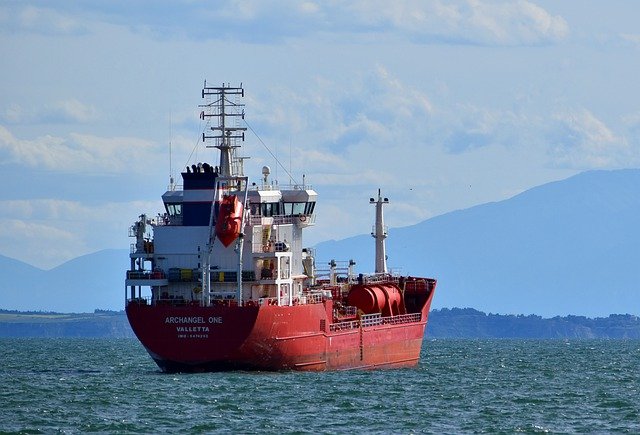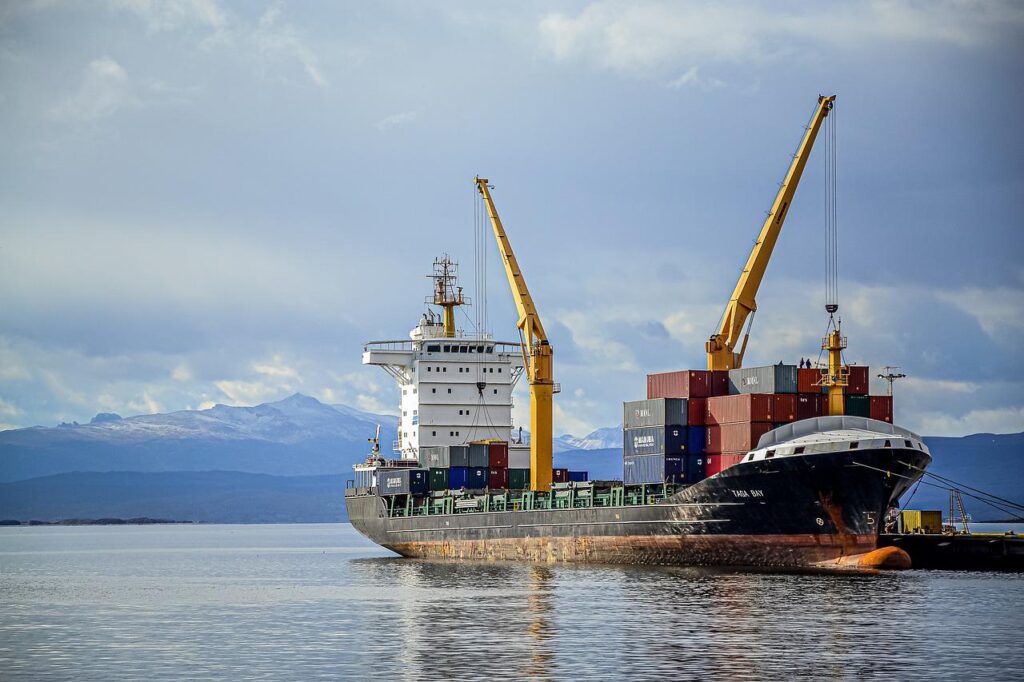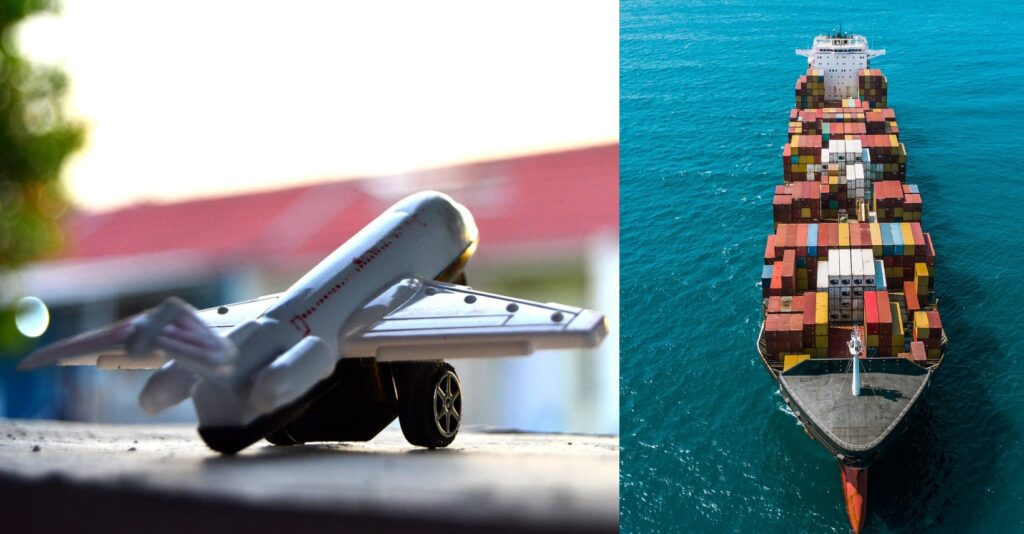This is the first year of the twenty-first century. Nothing will ever be accomplished on a global scale until there is widespread movement of products and services. There is no way to determine for sure if the thing you are utilising, the food you are consuming, or the clothes you are wearing were produced in your own country or imported from another. The globe is more linked than it has ever been, and it is impossible to pinpoint exactly where anything began.
More than ninety percent of all goods that are traded throughout the world are transported by water nowadays. Transportation offers a number of benefits to the manufacturing industry. For instance, the development of shipping lanes has made it possible to move substantial quantities of goods from one end of the world to the other in a manner that is both secure and effective.
Water travel is one of the modes of transportation that offers the most value for the money. It is reasonable to have concerns about sea freight, and we will answer all of your concerns about sea freight, including its method and other difficulties, in this post. It is natural to have concerns about sea freight. Let’s get the party started right away, shall we?
What makes maritime freight unique in comparison to other forms of freight transportation?
When it comes to shipping vast quantities of goods all across the world through sea freight, companies rely on the services of cargo ships. Because it is the least expensive method, this form of transportation is the one that the vast majority of companies choose to use when moving a large quantity of things.
Sea freight is distinct from other modes of transportation for products in a number of ways, including the fact that it is commonly used to move enormous quantities of goods or heavy equipment. However, sea freight does share some traits.
The transportation of products by water is made possible by large metal containers, which, if you’ve ever been to a port, you’ve almost likely seen. There are less limitations placed on freight shipped by sea. Oil, military hardware, and aeroplanes are just some of the essential goods that may be transported by sea freight. This method is also used to convey other essential goods.
A seller (the manufacturer), a buyer, ocean carriers, freight forwarders, brokers, port officials, and insurance providers are all involved in sea freight, just as they are in the other modes of transportation.
What are the steps involved in shipping products overseas through sea?
The transportation of goods by ship is one of the aspects of a supply chain that is considered to be of the utmost importance. First things first: if you want to transfer something by sea, you need to get in touch with a shipping firm. The businesses in question are of a greater size and are less difficult to communicate with.
Shipping firms will ask you for information on your products and the weight of your cargo. They will also inquire about the kinds of things you want them to ship and the location from where you want them to collect the items. You have two choices: you may deliver your items directly to the shipping company, or you can pay a little charge to have the shipping company pick up your items directly from your place of business or residence.
There is a straightforward explanation for why only massive loads are transported: although a shipping container is big enough to accommodate a significant number of products, they cannot be utilised to carry insignificant quantities of goods owing to the exorbitant costs involved in doing so.
Therefore, who exactly is considered to be a consumer of Sea Freight?
When people who wish to import and export goods from and to other nations across the world employ sea transportation, this practise is referred to as “sea freight,” and it is denoted by the word “sea freight.” If you want to take advantage of sea freight, you need to be transporting a significant number of items. Sea freight is most effective when it is used to transport a big quantity of goods since it is inefficient and hazardous when it is used to transport a small number of goods.
What Are Some of the Different Kinds of Cargo That Can Be Transported Via Sea Freight?
In a normal situation, the vast majority of products are able to be transported utilising ocean freight. During this entire period, you are need to stay in contact with your shipping agency or freight forwarder in order to continue receiving confirmation from them. If the total weight of all of your things is more than 100 kilogrammes, you should probably consider sending them by sea rather than air.
You need to keep in mind that there are some things that cannot be transported through sea freight because of the characteristics of the goods. Items that are hazardous, perishable, or delicate need to be carried in containers that have been specifically built for them. To ensure that your shipping agents are aware of the items you are transporting, the following should be done:
There are several positives and negatives associated with shipping goods by sea.
Every situation that has some positive aspects also has some negative aspects. The following is a list of some of the advantages and disadvantages of exporting things by sea:
The Many Benefits That Come With Using Sea Freight
It is not prohibitively expensive.
When compared to other modes of transportation, the cost of transporting goods through water is significantly lower, making it an attractive option for companies that need to transfer large quantities of merchandise. Due to lower taxes and VAT, maritime freight can be four to six times less expensive than air freight, depending on the location of the shipment’s final destination.
It is feasible for a cargo vessel to transport seemingly unimaginable quantities of products in a single voyage. As a consequence, the rates that are charged to all parties involved are reduced.
Ideal for transporting big amounts of various materials
The shipping of heavy or bulky products, such as large automobiles and equipment, as well as industrial components, building materials, and other similar things, can be easily handled and transported by sea freight, but not by air freight. This is because air freight cannot accommodate the size or weight of the shipped goods. Ships have the capability of transporting a diverse variety of heavy goods, but aircraft are unable to carry massive or cumbersome cargo.
Delivering hazardous materials may be done in a method that is risk-free and without incident using safety ships. A comprehensive training programme on the safe handling of such items has been provided to the crew of the shipping vessel, and measures have been established to protect both the cargo and the surrounding environment. Throughout the duration of the shipping, members of the crew do routine inspections of the contents of the containers, and for added peace of mind, the containers are hermetically sealed and secured.
Conduct that is respectful of the natural environment
Shipping has a very low carbon footprint in comparison to other forms of transportation since it uses far less fuel. As a result, shipping is significantly more environmentally friendly than other routes of transportation.
The Downsides of Shipping Goods by Sea If you want to make the most of the time you have available, you should know that shipping goods by sea is a slow method of transportation since it takes more time than other modes of travel. Because delivery might take several days, weeks, or even months in some circumstances, sea freight is obviously not the most effective means of transportation for smaller and more costly commodities because of the length of time it takes to complete the journey.
The likelihood of there being harm is increasing.
The risks that come with using maritime freight are greatly increased due to the length of time it takes for it to go from the point of shipping to the point of delivery. There is a chance that there may be significant delays, and if the weather is particularly severe, there is a chance that the cargo will be damaged or lost.
The quality of the connection has become weaker.
Large ships that are delivering containers may have difficulty docking in many regions of the world since there are insufficient shipping ports and terminals in such areas. It’s possible that the distribution of products will be significantly hindered by a lack of appropriate infrastructure.
When something is delivered by Sea Freight, how long does the process take?
Shipping by sea may take anywhere from one week up to eight weeks under perfect conditions, with the amount of time needed being determined by the distance travelled as well as other considerations.
However, the amount of time it takes for goods to arrive at their destinations is also affected by a variety of other circumstances. The amount of time it takes to carry products through water is dependent on a number of factors, including the amount of time required for customs clearance at both ports and the amount of time spent in transit and the weather.
Because some areas are more isolated than others, geography has a significant role in determining how much time is required to travel between different locations. Other aspects to take into account include the nature of the shipment, any necessary documents, the current state of the weather, and the capabilities of the carrier. During the procedure, there is a possibility that there will be further delays that were not expected.
If you want to be sure that your items arrive in time for a specific holiday or sales season, you should give yourself at least a week’s worth of leeway on both sides of the transaction.
How Much Does It Cost to Ship Something Via Sea Freight?
The terms agreed upon by the buyer and the seller of the goods are the sole factors that will determine the total amount paid for sea freight. There are a lot of terms and conditions on which you and the vendor might be able to reach an agreement. The level of responsibility that your vendor has will directly correlate to the amount of increase in the cost of sea freight. It is possible that you may incur an increased fee in order to have the items delivered to your property. You will be responsible for paying the fees of the insurance policy if the products are covered. It is essential to determine the overall cost of the items you intend to export before you do so; the majority of reputable shipping firms can assist you with this process.
The price of fuel, fluctuating currency exchange rates, varying levels of seasonal demand, and the quantity of available sea transportation capacity, which functions as a commodity, are all factors that might influence costs. The price of a product will go higher if there is a greater demand than there is supply.
Is it more cost effective to ship goods by sea as opposed to by air?
Both the sea and the air are types of transportation that cannot be replaced and are incompatible with one another. Each has its own set of benefits and drawbacks, as well as unique differences in the kinds of items and the quantities that may be transported by it.
When delivering commodities or other important objects such as papers, complicated technology, or anything else that has to be delivered as quickly as is practically possible, air shipment is the method of choice. This includes anything with a low weight. You should keep in mind that using the air will set you back a significant amount of money before you decide to do it.
If you are planning to export large quantities of non-perishable goods, water transport is the mode of transport that will provide the greatest return on investment. In this particular scenario, the costs will be cut down by a large amount.
The type of shipment, the amount of weight the package contains, and the desired arrival time all play a significant role in determining whether mode of transport—sea or air—should be utilised.
What are the differences between LTL and FCL in sea freight?
Both less than container load (LCL) and full container load (FCL) shipments are accepted in the marine freight sector. When it comes to shipping, your shipping company will let you know whether or not your commodities require less than container load (LCL) carriage or full container load (FCL) carriage.
Shipments classified as “less than container load” (LCL) are your best bet when it comes to moving products that are too tiny to be contained within a full container. As a consequence of this, the items are put onto a container, which also conveys the products and supplies of other individuals, and driven to their destination.
Items that can be carried in a single container, like those shipped by FCL, are the best candidates for this method (Full Container Load). The contents fill the container up to its utmost capacity. If you choose with the FCL option, then a container for the transport of your bulky items will be provided to you.
Conclusion
It is essential to the success of both international business and the economy as a whole that goods be shipped by sea freight, which is one of the most effective ways that goods may be transported. As new forms of transportation are developed and new technologies are developed, maritime freight is becoming a more common form of freight transportation.
Following the completion of this paper, you should have a deeper comprehension of maritime freight and the processes involved in it.
KGRN is able to assist you with every stage of the process, from the initial collection to the final delivery of your goods. When it comes to ocean freight, there is now no need to go any farther than what you have already found. Please get in touch with one of our sea freight advisers if you need assistance in making the best shipping options.
Image Credit: Image by Thanasis Papazacharias from Pixabay




